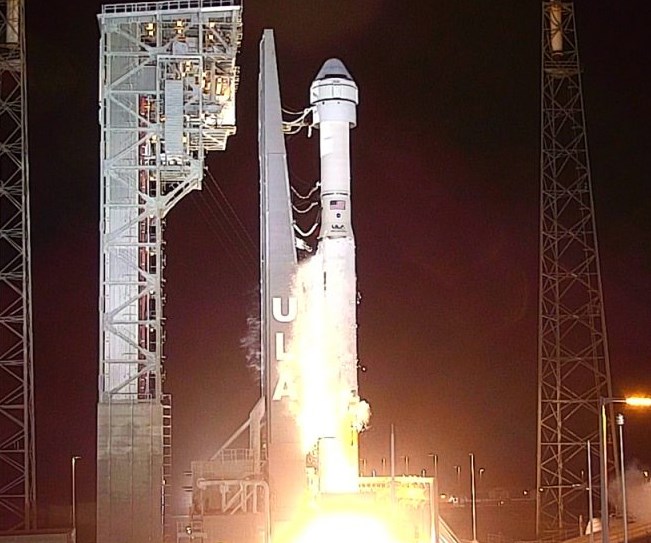Boeing Starliner experiences anomaly during orbital flight test
While an off-nominal orbital insertion has changed plans for the mission, Starliner is in stable orbit.
Share

Source | NASA
Boeing’s Starliner spacecraft was launched for an uncrewed orbital flight test on Dec. 20 aboard an Atlas V rocket. However, after a successful launch, the spacecraft experienced an anomaly during its orbit insertion (the operation of adjusting momentum to enter a stable orbit) and NASA (Washington, D.C., U.S.) announced the spacecraft had used too much fuel during the maneuver and would be unable to rendezvous with the International Space Station (ISS) as planned.
The intended mission was to have Starliner dock with the space station, rehearsing the flight path it will take for its first crewed mission. While the off-nominal orbital insertion has changed plans for the mission, the craft is in stable orbit and NASA is working on next steps.
“The spacecraft is currently in safe, stable configuration,” said Boeing spokesperson Kelly Kaplan. “Boeing and NASA are working together to review options for the test and mission opportunities available while the Starliner remains in orbit.”
NASA was aiming for a crewed Starliner mission in 2020. It is currently unclear how the OFT anomaly will affect that schedule.
NASA Administrator Jim Bridenstine emphasized that were this a crewed mission, the crew would be safe and in fact would have been able to override the autonomous system and correct course.
In the meantime, Space X is also working with NASA toward a crewed mission in 2020 with its Crew Dragon spacecraft. While the Crew Dragon has completed an uncrewed flight test to the ISS, it still needs to complete a test of the capsule's emergency abort system — a test that Starliner successfully completed on November 4.
Related Content
-
Plant tour: Albany Engineered Composites, Rochester, N.H., U.S.
Efficient, high-quality, well-controlled composites manufacturing at volume is the mantra for this 3D weaving specialist.
-
Cryo-compressed hydrogen, the best solution for storage and refueling stations?
Cryomotive’s CRYOGAS solution claims the highest storage density, lowest refueling cost and widest operating range without H2 losses while using one-fifth the carbon fiber required in compressed gas tanks.
-
Plant tour: Middle River Aerostructure Systems, Baltimore, Md., U.S.
The historic Martin Aircraft factory is advancing digitized automation for more sustainable production of composite aerostructures.
















